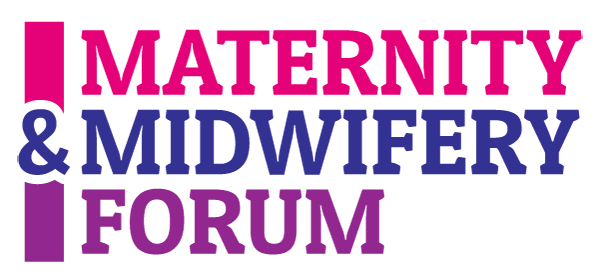The world of healthcare practice is constantly evolving in the current digital age. Midwife and Digital Clinical Facilitator at Northampton General Hospital, Hauwa Hamza, points to the need for more midwives to be digitally literate and face the changes head on for the benefit of women and babies.
_________________________________________________
At present, there is no publicly available data detailing how many midwives in the UK hold an undergraduate degree in the field of Information Technology (IT). Bridging the gap between clinical practice and digital transformation is something only a small but increasingly vital group of clinicians can do. Most midwives working in digital roles develop their digital skills on the job. In more recent times, this has been supported by postgraduate training and certifications in health informatics. Those who are dual trained in IT and midwifery before embarking on a digital clinical role are niche because there are relatively few midwives who hold both undergraduate qualifications. However, this number is growing as digital transformation gains momentum in healthcare.
Digital technology has become an integral component in healthcare, reshaping practices and patient interactions across various disciplines. Midwifery is experiencing a significant change with the integration of Electronic Patient Records (EPRs) and the move away from traditional paper documentation. As such, a profound cultural change is necessary, as is an elevation in midwifery education to incorporate clinical digital literacy, while remaining committed to keeping woman-centred care at the forefront. Midwife advocates, educators and digital clinicians should passionately support this evolution to ensure that the essence of midwifery is preserved while embracing technological advancements.
Historically, paper records have been valued for their tangibility and the sense of personal connection they provide between midwives and the women they care for. However, the digitalisation of records offers opportunities for enhanced efficiency, accuracy, and accessibility of information. This transition from paper-based records to EPRs represents a fundamental shift in the culture of midwifery practice. Embracing this change requires midwives to adapt their workflows and attitudes towards documentation. A study conducted in Australian maternity settings revealed that midwives spent a significant portion of their time engaged with electronic medical records, indicating a shift in practice dynamics (Kearney et al., 2023). While this engagement ensures thorough documentation, it also raises concerns about potential impacts on direct woman-midwife interactions. Therefore, it is crucial to balance the benefits of digital records with the preservation of the human element that defines midwifery care.
To successfully navigate the digital transformation, midwives must become digitally literate. Whilst they must gain technical knowledge to operate EPR systems, it is equally important for them to understand data security, ethical considerations, and the implications of digital documentation on patient care. The Sustainable Healthcare with Digital Health Data Competence (Susa) project, launched by a consortium of European universities, aims to enhance the digital skills of health professionals through comprehensive educational programmes (Financial Times, 2025). Such programmes highlight the growing need for digital competence as an essential component of healthcare education. Incorporating similar modules into midwifery education can equip future midwives with the necessary skills to effectively utilise digital tools while maintaining the core values of their practice.
Embedding clinical digital competencies within midwifery curricula is essential to prepare students for the realities of modern healthcare environments. This integration should be holistic, ensuring that clinical digital literacy is interwoven throughout the educational experience. Practical training sessions and simulation exercises can provide midwifery students with hands-on experience in using EPR systems and other digital tools. Furthermore, discussions on the ethical and legal aspects of digital documentation can foster a comprehensive understanding of the responsibilities associated with electronic records. By prioritising digital literacy in education, we can cultivate a workforce that is adept at leveraging technology to enhance care delivery.
It is vital to remember that amidst the digitalisation of healthcare, it is important to ensure that woman-centred care remains the cornerstone of midwifery practice. Technology should never replace human connection between a woman and her midwife, or clinical judgement. It should only serve as an enabler, enhancing the quality and accessibility of care. Initiatives within the NHS aimed at improving maternity services through digital solutions (NHS Transformation Directorate, 2022) evidence the pivotal role that midwives play in this integration. By actively involving midwives in the design and implementation of digital systems, these tools can be tailored to support maternity care needs and preserve the essence of woman-centred care.
Challenges such as varying levels of digital literacy among staff, as well as concerns about data security, and resistance to change, accompany the midwifery digital transformation journey. However, we must see these challenges as opportunities for growth and innovation. A culture of continuous learning and ongoing support can facilitate a smoother transition to digital practices. Additionally, the integration of digital tools can improve data accuracy, mitigate human error to some degree, enhance communication among clinicians, and make care delivery more efficient. These opportunities allow midwifery to evolve in alignment with broader healthcare advancements, and at the same time maintain its key commitment to woman-centred care.
It is our collective responsibility to lead and embrace this change, ensuring that our less digitally literate colleagues are equipped with the skills necessary to navigate this new landscape. Clinical digital competencies within midwifery curricula as well as courage, adaptability, and a collective vision for a future where digital and traditional midwifery practices coexist, will assist us to harness the benefits of technology to improve outcomes for mothers and babies.
References
Financial Times. (2025). EU project launched to prepare health workers for a digital future. Financial Times. Retrieved from https://www.ft.com/content/a56ef5a3-f5d8-446d-ae9b-f503cce20de7
Kearney, L., Craswell, A., Cole, R., Hadland, M., Smyth, W., & Nagle, C. (2023). Woman-centred care and integrated electronic medical records within Australian maternity settings: Point prevalence audit and observational study. Midwifery, 118, 103546. https://doi.org/10.1016/j.midw.2023.103546
NHS Transformation Directorate. (2022). How digital midwives are improving care for mothers and babies. NHS England. Retrieved from https://transform.england.nhs.uk/blogs/how-digital-midwives-are-improving-care-for-mothers-and-babies/
Hauwa Hamza
Midwife and Digital Clinical Facilitator
Northampton General Hospital
May/June 2025


